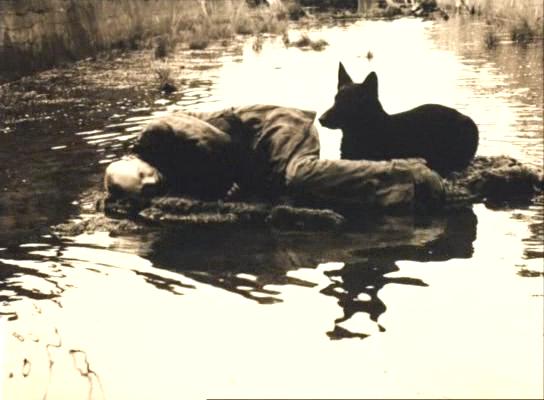Death by Celluloid July 10, 2010
Author: Beach Combing | in : Contemporary , trackback
When Beachcombing thinks of dying for your art wannabe poets from the 1890s come to mind, starving or being tiresomely consumptive in garrets in Paris or Berlin or Rome. However, Beachcombing does have a couple of examples in his files of men and women dying for the cinema. He is particularly interested in mortality-inducing sets. By this he doesn’t refer to ‘unlucky’ films: there are, for example, some rather difficult to swallow claims about deaths among the cast and crew of the Mothman Prophecies. Nor does he refer to that perennial urban legend the snuff film. Rather he is referring to films that came with demonstrable health risks.
One example of this genre is the terrible Howard Hughes’ flick The Conqueror (1956), with John Wayne miscast as Genghis Khan. Hughes filmed much of The Conqueror near St George, Utah, about 140 miles downwind from the US Nevada Test Site, where, as recently as 1953, nuclear bombs had been tested above ground – locals in St George had reported ‘a strangely metallic taste in the air’ soon after the explosions. When Hughes finished filming ‘on location’ he then had tonnes of Utah – presumably radioactive – earth shipped to Hollywood to create convincing sets there. Beachcombing can almost hear the Geiger counter clicking…
Of the 221 employees on the film an incredible 91 later suffered from cancer: Beachcombing offers as proof an article from People Magazine…! There is also much better evidence out there that ‘downwinders’ from this part of Utah suffered for many years from unusually high rates of cancer. The US government doubtless had good motives for testing nuclear weapons, but it was, this evidence suggests, unprepared/unable to defend or later to compensate its own citizens.
Another film that drew the short straw was Tarkovsky’s Stalker, made in abandoned industrial areas in Estonia in 1979. Not only was working with the perfectionist Tarkovsky a trial. Not only was the Soviet Union a dangerous boss – though by the 1970s at least new films were no longer rated by Stalin and Beria in private showings. Not only was most of the original footage of Stalker lost, needing to be shot again. The area where the film was made was apparently heavily polluted. Several working on the film had strong allergic reactions and some have suggested that Tarkovsky (obit 1986, aged 54) and his wife both died from tumours caused by exposure during filming.
Here Beachcombing cannot quote impressive statistics such as those gathered by People Magazine for The Conqueror. But the idea of Stalker bringing death is fitting – perhaps too fitting? – for one of the most disturbing films ever made. Beachcombing watched it with Snegly a couple of years ago for Christmas and is still in shock. Stalker makes a Bergman film look like saccharine eye-candy.
Beachcombing would love to know if there are other killer films out there? Or can anyone bring evidence to back up the claims made here about The Conqueror and Stalker – Beachcombing would ideally put People Magazine gently to one side? Finally, Beachcombing cannot resist asking, if any reader has ever come across good documentary evidence that Joseph Stalin put a contract out on John Wayne (Montefiore)? If you kill Trotsky with an ice-pick what do you use to get rid of the Duke… Answers on a postcard addressed to drbeachcombingATyahooDOTcom
***
1 Octo, 2010: Beachcombing was particularly pleased to get this email from Jan T. who has connections with the film industry ‘Steve McQueen died of mesothelioma, a type of lung cancer that is caused specifically by exposure to asbestos. Asbestos was sometimes used to double as snow in movies. I don’t know what movie McQueen was in that used asbestos, but that’s definitely how he died… McQueen was ill at a time when there was no treatment for mesothelioma, and once the diagnosis was made, the patient would be dead in 12-18 months. McQueen went to Mexico and tried all kinds of alternative treatments, but they did not work. Now there is treatment for this disease.’ Beachcombing lost a grandparent to this horrible disease. Thanks Jan!
14 April 2013: Dennis M writes: Director Varick Frissell, cinematographer Alexander G. Penrod, and almost all the film crew were killed on 15 March 1931, when the sealing ship S.S. Viking, from which they were shooting additional footage, exploded in ice off the Horse Islands on the northern Newfoundland coast. In all, 27 people lost their lives; this is the largest number of fatalities ever incurred in the production of a film. Please don’t turn this footnote into a rant against the sealing industry which has sustained Newfoundlanders for centuries, continues to do so, and will hopefully prosper for many years to come. If the industry and its workers does perish in the face of manipulated media images, it will be another instance of Death by Celluloid – of the industry and the NL culture it supports. Thanks Dennis!



